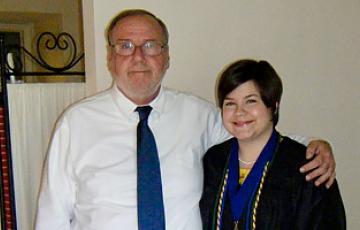Search Results

Defining and Redefining a Blood Cancer Diagnosis
Science historian June Goodfield wrote, “Cancer begins and ends with people.”
This Blood Cancer Awareness Month, it’s important to know that The Leukemia & Lymphoma Society (LLS) is on a mission to cure blood cancers and improve quality of life for the nearly 1.7 million people in the U.S. living with or in remission from blood cancer.
LLS is all about people—an organization full of people who are united in the urgent effort to help every person impacted by blood cancer.
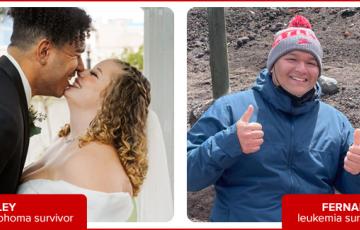
Adolescent & Young Adult Cancer Awareness Week: Free Support & Financial Resources from The Leukemia & Lymphoma Society for Blood Cancer Patients, Survivors, Families & Caregivers
** The following article highlights free resources and programs that might be of particular interest to the young adult community; these are also available to all blood cancer patients, including the families and caregivers of adolescents with a blood cancer. We encourage parents/guardians of minors (up to age 18) to request a free copy of the “Caring for Kids And Adolescents With Blood Cancer” workbook by calling 800-955-4572 and to learn more below about ways LLS can help.
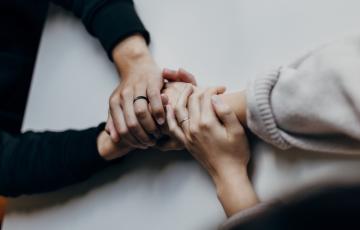
Top Mental Health Resources For Blood Cancer Patients & Caregivers
From physical symptoms of blood cancer itself to treatments and their side effects, the experience puts a patient’s body through a lot. But how does cancer affect you emotionally?
Bottom line: Learning that you or someone you love has a serious illness is scary.
It reaches beyond blood tests: You might feel hopeless, irritable, or lose interest in things you once enjoyed. That’s why taking care of your mind, just as much as your body, is crucial when you’re facing blood cancer.

Helping Survivors Lead Longer Better Lives
Late last year I had the privilege of attending a special screening of the documentary American Symphony. The film chronicles the experiences of writer Suleika Jaouad and her husband musician Jon Batiste after learning that her acute myeloid leukemia (AML) had returned after years of remission. The movie shows how the couple navigates uncertainty, treatment, and their new normal afterwards.
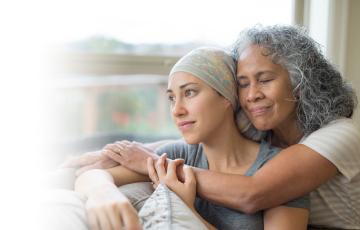
Caregiver Support
Am I A Caregiver?If you’re providing regular assistance, you are a caregiver. Your loved one may only need support occasionally, or your loved one may need constant care. The kind of support needed will be different for each person and may also change over time. But if you're consistently providing care, you are a caregiver.
Here are just a few examples of caregiver tasks:

Every Year Counts: Celebrating My Healing from Hodgkin Lymphoma
Many blood cancer survivors remember the day they were diagnosed, and they never forget it. For Racheli Alkobey Peltier—Director of Diversity, Equity, and Inclusion at The Leukemia & Lymphoma Society (LLS)— when that date comes around, it’s a chance to mark her progress.
Each year, Racheli marks important milestones in her experience with blood cancer—taking time to reflect, feel gratitude, and look ahead. These dates are her “cancerversaries.”
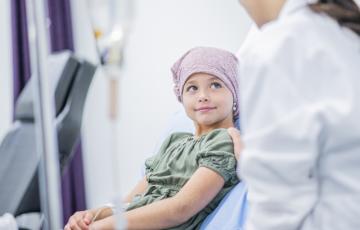
Ushering In a New Era of Pediatric Blood Cancer Treatment and Care
We caught up with Gwen Nichols, MD, Chief Medical Officer at The Leukemia & Lymphoma Society (LLS), to share the progress we’re making to bring cures and better care to children with blood cancer through The LLS Children’s Initiative.
Tell us about The LLS Children’s Initiative and why it’s so important to you and LLS.
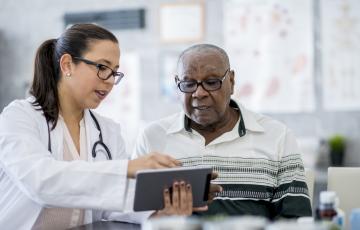
What Is Blood Cancer?
Reviewed by Gwen Nichols, MD, EVP and Chief Medical Officer at The Leukemia & Lymphoma Society
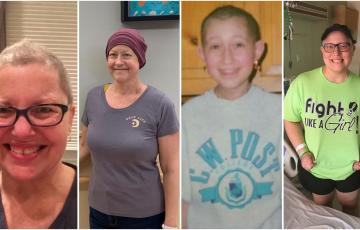
3 Things You Might Like to Know About Being Newly Diagnosed
A cancer diagnosis is a pivotal moment in a person’s lifetime.
From that point forward, it’s a part of who you are. It shapes how you think about the world—through the lens of your diagnosis and what’s important to you.
Follow-Up Care
Click here for information about follow-up care, including what to expect, long-term and late effects of treatment, survivorship clinics, and other resources such as The National Comprehensive Cancer Network (NCCN) treatment guidelines.
Use the Survivorship Workbook to collect all the important information you need throughout diagnosis, treatment, follow-up care and long-term management of a blood cancer.
Follow-Up Care
Click here for information about follow-up care, including what to expect, long-term and late effects of treatment, survivorship clinics, and other resources such as The National Comprehensive Cancer Network (NCCN) treatment guidelines.
Use the Survivorship Workbook to collect all the important information you need throughout diagnosis, treatment, follow-up care and long-term management of a blood cancer.
Follow-Up Care
Click here for information about follow-up care, including what to expect, long-term and late effects of treatment, survivorship clinics, and other resources such as The National Comprehensive Cancer Network (NCCN) treatment guidelines.
Use the Survivorship Workbook to collect all the important information you need throughout diagnosis, treatment, follow-up care and long-term management of a blood cancer.
Childhood and Young Adult Resources
On this Page:
Resources for Children, Young Adults and ParentsOne-on-One Support
Side Effects
The main goal of treatment for myeloma is to get rid of myeloma cells. The term side effect is used to describe how treatment affects healthy cells. Patients react to treatments in different ways. Sometimes there are very mild side effects. Other side effects may be serious and last a long time.
Myeloma patients should talk with their doctors about side effects before they begin any type of treatment. There are drugs and other therapies can prevent or manage many side effects.
Legal and Financial
Advance DirectivesAdvance directives are a patient's instructions about future medical care in case he or she can no longer speak for himself or herself. Ideally, an advance directive should be in place before a person becomes ill or before a crisis.
CML in Children and Young Adults
Most cases of CML occur in adults. From 2012 to 2016, approximately 2 percent of all cases of CML occurred in children, adolescents and young adults less than age 20.
Follow-Up Care
Those who have been treated for MDS are encouraged to:
Pain
A cancer diagnosis does not mean that you will have pain. Still, many people with cancer do have pain at some point. Good pain control is part of proper cancer care.
Managing pain may result in better treatment outcomes, so patients should talk to their healthcare team about their pain right away. Left untreated, pain can:
Side Effects
Both cancer therapy and acute myeloid leukemia (AML) can sometimes produce side effects. For most patients, side effects are temporary and subside once the body adjusts to therapy or when therapy is completed. For other patients, side effects can be more severe, sometimes requiring hospitalization. The side effects of chemotherapy may vary, depending on the drugs used and the overall health of the patient.
Talk with your child’s doctor about potential side effects. Medications and other therapies can prevent or manage many side effects.
Side Effects
Cancer treatment for Hodgkin lymphoma can produce side effects. The goal of treatment is to kill the cancer cells, but cancer treatments can damage healthy cells too which causes side effects.
Patients react to treatments in different ways. Some patients may have very mild side effects. For other patients, side effects can be more severe, sometimes requiring hospitalization. For most patients, treatment side effects are temporary and go away once therapy ends.
